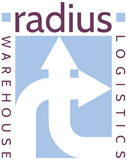In a world where we are becoming increasingly aware of our impact on the environment, a spotlight has been placed on the freight movement industry. Significant contributors to carbon emissions, the maritime transport industry releases some 940 million tonnes of CO2 per year with contributions to global greenhouse gas emissions of 2.5%. An article in the Guardian from 2009 stated that a container ship could potentially release the same amount of detrimental chemicals as 50 million cars. The demand for action to be taken to reduce this while keeping these streams of cargo movement open is vital. And, this is where hybrid ships and technology come into play.
How the Industry Is Responding
The shipping industry has become increasingly aware of the demands on them to make a change. In 2005, the Emission Control Areas (ECAs) or Sulfur Emission Control Areas (SECAs) were established. This has reduced the appropriate sulfur standards to below 0.1% with a further decrease down to 0.5% applicable to the shipping industry from 2020. These restrictions have actively directed shipping manufacturers towards new technology to design and supply ships suitable for use in these areas. The demand here is to move away from heavy fuel oils and instead find alternatives.
In 2018, the International Maritime Organization was backed by 170+ members of the UN in their goal to cut CO2 emissions by 50% from ships by 2050. And, from this, a need for more environmentally friendly but continuously reliable freight movement comes into play.
Where Do Hybrid Ships Come In?
One such answer, alongside low-sulfur diesel and LNG, is the release of hybrid ships into the market. Built with unique propulsion systems, they are designed to reduce fuel consumption and significantly limit the number of emissions released into the atmosphere. In 2021, Hagland Shipping announced the launch of their battery-hybrid propulsion coastal bunkers with four in order to date. Featuring a plug-in battery system, it is expected to reduce CO2 emissions by more than 30% and satisfies the IMO Tier III by reducing NOx levels by up to 95%. And it doesn’t end there. Over the years, more hybrid ships have been released onto the market like Catriona, Ferguson Marine’s diesel-electric-battery-powered hybrid ferry and a Wightlink’s diesel-electric hybrid ferry for use on the Fishbourne to Portsmouth route.
While the technology is still in development for all-electric ships, these hybrid models are changing the way we see international freight movement. At Radius Warehouse & Logistic Services, we continue to stay updated with the latest developments so that we can create logistic strategies that align with your business goals.



